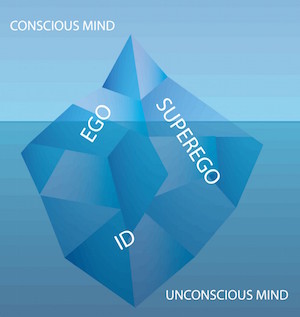Five Counseling Theories and Approaches
Psychotherapy theories provide a framework for therapists and counselors to interpret a client’s behavior, thoughts, and feelings and help them navigate a client’s journey from diagnosis to post-treatment. Theoretical approaches are an understandably integral part of the therapeutic process. But with so many different methods out there, how do you know which counseling approach works best for you? Whether you’re a student learning about counseling theories or a client looking for the right therapist, the following detailed descriptions will give you a deeper understanding of each counseling method. These theories are integrated throughout the curriculum of Counseling@Northwestern and are built into a foundation grounded in the psychodynamic perspective.

Psychoanalysis/Psychodynamic Theory
Psychoanalysis or psychodynamic theory, also known as the “historical perspective,” has its roots with Sigmund Freud, who believed there were unconscious forces that drive behavior. The techniques he developed, such as free association (freely talking to the therapist about whatever comes up without censoring), dream analysis (examining dreams for important information about the unconscious), and transference (redirecting feelings about certain people in one’s life onto the therapist) are still used by psychoanalysts today.
Counseling@Northwestern uses this theory to train counselors, and it is embedded throughout the counselor training process. In general, psychotherapists and counselors who use this approach direct much of their focus and energy on analyzing past relationships and, in particular, traumatic childhood experiences in relation to an individual’s current life. The belief is that by revealing and bringing these issues to the surface, treatment and healing can occur. This theory is highly researched, and as the field of neuroscience advances, counselors are finding how psychodynamic theory can actually positively affect a client’s brain. Psychodynamic theory can be more time intensive in comparison to some short-term theories because it involves changing deeply ingrained behaviors and requires significant work on understanding one’s self.
Behavioral Theory
Behavioral theory is based on the belief that behavior is learned. Classic conditioning is one type of behavioral therapy that stems from early theorist Ivan Pavlov’s research. Pavlov executed a famous study using dogs, which focused on the effects of a learned response (e.g., a dog salivating when hearing a bell) through a stimulus (e.g., pairing the sound of a bell with food).
B. F. Skinner developed another behavioral therapy approach, called operant conditioning. He believed in the power of rewards to increase the likelihood of a behavior and punishments to decrease the occurrence of a behavior. Behavioral therapists work on changing unwanted and destructive behaviors through behavior modification techniques such as positive or negative reinforcement.
Cognitive Theory
In the 1960s, psychotherapist Aaron Beck developed cognitive theory. This counseling theory focuses on how people’s thinking can change feelings and behaviors. Unlike psychodynamic theory, therapy based on cognitive theory is brief in nature and oriented toward problem solving. Cognitive therapists focus more on their client’s present situation and distorted thinking than on their past. Cognitive and behavioral therapy are often combined as one form of theory practiced by counselors and therapists. Cognitive behavioral therapy, or CBT, has been found in research to help with a number of mental illnesses including anxiety, personality, eating, and substance abuse disorders.
Humanistic Approach
Humanistic therapists care most about the present and helping their clients achieve their highest potential. Instead of energy spent on the past or on negative behaviors, humanists believe in the goodness of all people and emphasize a person’s self-growth and self-actualization.
Humanistic theories include client-centered, gestalt, and existential therapies. Carl Rogers developed client-centered therapy, which focuses on the belief that clients control their own destinies. He believed that all therapists need to do is show their genuine care and interest. Gestalt therapists’ work focuses more on what’s going on in the moment versus what is being said in therapy. Existential therapists help clients find meaning in their lives by focusing on free will, self-determination, and responsibility.
Holistic/Integrative Therapy
Holistic and integrative therapy involves integrating various elements of different theories to the practice. In addition to traditional talk therapy, holistic therapy may include nontraditional therapies such as hypnotherapy or guided imagery. The key is to use the techniques and psychotherapy tools best suited for a particular client and problem.
There are various therapies that counselors can choose to study, but the type of theory matters less than the success of the relationship between client and therapist. In the Counseling@Northwestern online Master of Arts in Counseling Program, students are prepared to become self-reflective practitioners and learn to examine the factors that influence the client-therapist relationship to become successful counselors.

